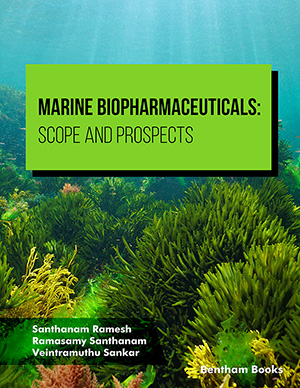Abstract
Currently, the parathyroid hormone (PTH) is a drug approved for use in humans only in bone metabolism diseases, as the osteoporosis. The PTH acts primarily by binding to its principal receptor, PTH/PTHrP-R, a member of the class B G protein-coupled receptor (GPCR) family that includes together receptors for other therapeutically important peptide hormones. PTH plays a central role in the maintenance of calcium and phosphate homeostasis and bone health. It acts to maintain bone and mineral homeostasis through several mechanisms: elevation of blood calcium by increasing osteoclastic bone resorption; enhancement of renal calcium reabsorption; stimulation of renal 1,25-dihydroxyvitamin D synthesis, leading to increased intestinal calcium absorption; and promotion of phosphaturia via inhibition of renal tubular transepithelial phosphate reabsorption . However, many findings indicate that the PTH could be a future drug essential in therapy of cardiovascular diseases through multiple effects on hematopoietic stem cells niche. In adult bone marrow, the hamatopoietic stem cells are located in the trabecular endosteum (osteoblastic niche) or sinusoidal perivascular areas (vascular niche). A plausible function for the vascular niche is to assist hematopoietic stem cells in transendothelial migration, which is important during both homing and mobilization. Indeed, in experimental models, PTH treatment increases migration of angiogenic CD45+/CD34+ progenitor cells to the hindlimb ischemia as well as in the ischemic heart, promoting tissue repair by enhanced neovascularization and cell survival.
Keywords: Vascular Niche, Parathyroid Hormone, osteoporosis, peptide hormones, phosphate homeostasis, hematopoietic stem cells, cardiovascular diseases, hindlimb ischemia
Current Medicinal Chemistry
Title: Targeting Vascular Niche by Parathyroid Hormone
Volume: 15 Issue: 28
Author(s): Caterina Pagliarulo, Paola Salvatore and Claudio Napoli
Affiliation:
Keywords: Vascular Niche, Parathyroid Hormone, osteoporosis, peptide hormones, phosphate homeostasis, hematopoietic stem cells, cardiovascular diseases, hindlimb ischemia
Abstract: Currently, the parathyroid hormone (PTH) is a drug approved for use in humans only in bone metabolism diseases, as the osteoporosis. The PTH acts primarily by binding to its principal receptor, PTH/PTHrP-R, a member of the class B G protein-coupled receptor (GPCR) family that includes together receptors for other therapeutically important peptide hormones. PTH plays a central role in the maintenance of calcium and phosphate homeostasis and bone health. It acts to maintain bone and mineral homeostasis through several mechanisms: elevation of blood calcium by increasing osteoclastic bone resorption; enhancement of renal calcium reabsorption; stimulation of renal 1,25-dihydroxyvitamin D synthesis, leading to increased intestinal calcium absorption; and promotion of phosphaturia via inhibition of renal tubular transepithelial phosphate reabsorption . However, many findings indicate that the PTH could be a future drug essential in therapy of cardiovascular diseases through multiple effects on hematopoietic stem cells niche. In adult bone marrow, the hamatopoietic stem cells are located in the trabecular endosteum (osteoblastic niche) or sinusoidal perivascular areas (vascular niche). A plausible function for the vascular niche is to assist hematopoietic stem cells in transendothelial migration, which is important during both homing and mobilization. Indeed, in experimental models, PTH treatment increases migration of angiogenic CD45+/CD34+ progenitor cells to the hindlimb ischemia as well as in the ischemic heart, promoting tissue repair by enhanced neovascularization and cell survival.
Export Options
About this article
Cite this article as:
Pagliarulo Caterina, Salvatore Paola and Napoli Claudio, Targeting Vascular Niche by Parathyroid Hormone, Current Medicinal Chemistry 2008; 15 (28) . https://dx.doi.org/10.2174/092986708786848695
| DOI https://dx.doi.org/10.2174/092986708786848695 |
Print ISSN 0929-8673 |
| Publisher Name Bentham Science Publisher |
Online ISSN 1875-533X |
Call for Papers in Thematic Issues
Advances in Medicinal Chemistry: From Cancer to Chronic Diseases.
The broad spectrum of the issue will provide a comprehensive overview of emerging trends, novel therapeutic interventions, and translational insights that impact modern medicine. The primary focus will be diseases of global concern, including cancer, chronic pain, metabolic disorders, and autoimmune conditions, providing a broad overview of the advancements in ...read more
Cellular and Molecular Mechanisms of Non-Infectious Inflammatory Diseases: Focus on Clinical Implications
The Special Issue covers the results of the studies on cellular and molecular mechanisms of non-infectious inflammatory diseases, in particular, autoimmune rheumatic diseases, atherosclerotic cardiovascular disease and other age-related disorders such as type II diabetes, cancer, neurodegenerative disorders, etc. Review and research articles as well as methodology papers that summarize ...read more
Chalcogen-modified nucleic acid analogues
Chalcogen-modified nucleosides, nucleotides and oligonucleotides have been of great interest to scientific research for many years. The replacement of oxygen in the nucleobase, sugar or phosphate backbone by chalcogen atoms (sulfur, selenium, tellurium) gives these biomolecules unique properties resulting from their altered physical and chemical properties. The continuing interest in ...read more
Current advances in inherited cardiomyopathy
Describe in detail all novel advances in multimodality imaging related to inherited cardiomyopathy diagnosis and prognosis. Shed light to deeper phenotypic characterization. Acknowledge recent advances in genetics, genomics and precision medicineread more
 5
5
- Author Guidelines
- Graphical Abstracts
- Fabricating and Stating False Information
- Research Misconduct
- Post Publication Discussions and Corrections
- Publishing Ethics and Rectitude
- Increase Visibility of Your Article
- Archiving Policies
- Peer Review Workflow
- Order Your Article Before Print
- Promote Your Article
- Manuscript Transfer Facility
- Editorial Policies
- Allegations from Whistleblowers
- Announcements
Related Articles
-
Transposable Elements in Cancer and Other Human Diseases
Current Cancer Drug Targets Developing Histone Deacetylase Inhibitors as Anti-Cancer Therapeutics
Current Medicinal Chemistry Role of Nuclear Imaging in Cardiac Amyloidosis Management: Clinical Evidence and Review of Literature
Current Medical Imaging Chronic Heart Failure- Potential for Pharmacological Intervention
Current Medicinal Chemistry - Cardiovascular & Hematological Agents Sex Differences in Alcohol Use Disorder
Current Medicinal Chemistry Essential Roles of Toll-Like Receptors in Atherosclerosis
Current Medicinal Chemistry Gene Therapy to Improve High-Density Lipoprotein Metabolism and Function
Current Pharmaceutical Design Risk Prediction Models and Scores in Hypertrophic Cardiomyopathy
Current Pharmaceutical Design The Application of NMR Spectroscopy for the Study of Heart Failure
Current Pharmaceutical Design microRNA Regulation as a Therapeutic Strategy for Cardiovascular Disease
Current Drug Targets Metallothionein as a Scavenger of Free Radicals - New Cardioprotective Therapeutic Agent or Initiator of Tumor Chemoresistance?
Current Drug Targets General Aspects of Metal Toxicity
Current Medicinal Chemistry Health Benefits of Honey: Implications for Treating Cardiovascular Diseases
Current Nutrition & Food Science Targeting MDM4 as a Novel Therapeutic Approach for Hematologic Malignancies
Current Cancer Drug Targets Targeting the Cardiomyocyte Cell Cycle for Heart Regeneration
Current Drug Targets Topoisomerases and Anthracyclines: Recent Advances and Perspectives in Anticancer Therapy and Prevention of Cardiotoxicity
Current Medicinal Chemistry Hypothyroidism and Endothelial Function: A Marker of Early Atherosclerosis?
Recent Patents on Endocrine, Metabolic & Immune Drug Discovery Cardiac Autonomic Nervous System in Heart Failure: Imaging Technique and Clinical Implications
Current Cardiology Reviews Autonomic Nervous System in Viral Myocarditis: Pathophysiology and Therapy
Current Pharmaceutical Design P2X Receptors in the Cardiovascular System and their Potential as Therapeutic Targets in Disease
Current Medicinal Chemistry























